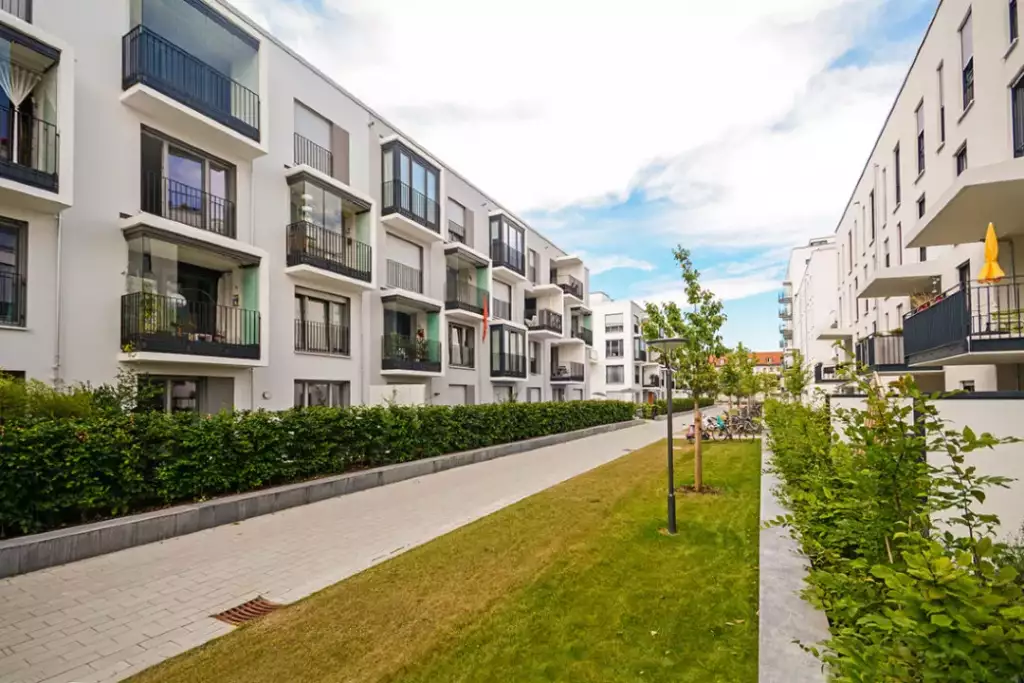When considering luxury in a multi-storey residential building, you think of condominiums and service apartments. Nowadays, many new property concepts blur the lines between a condo and a serviced apartment. However, there are differences between the two, and they both have advantages. It is essential to know what they are.
This article will examine 5 essential points you need to know before buying a condo or serviced apartment.
Facts You Need To Know Before Buying Property
First, let’s define the two.
What is a serviced apartment?
A service apartment is a fully furnished apartment available for both short-term and long-term stays. It provides various amenities for daily use, regular housekeeping, and other services.
Serviced apartments are like hotels but more affordable. Most are rented for short stays, like vacations or business trips.
What is a condominium?
A condominium or condo is a private residential living space, similar to an apartment, that an individual or family owns in a building or community with multiple units. All condominiums share a nonexclusive common area, such as yards, swimming pools, gardens, parking spaces, recreation rooms, or gyms, controlled by the condominium management.
Condominiums are similar to apartments except that a single person or corporation owns an apartment building, while a condominium is where different individuals own individual dwelling units.
What’s the difference between an apartment and a condo?
The core difference between a condo and an apartment is their land status. Condos are considered “residential,” whereas serviced apartments are considered “commercial.” This means that the two laws, taxes, and functionalities are very different.

The key points you need to know about them are as follows:
1. Difference in utility charges
As we mentioned before, serviced apartments and condominiums have different land statuses. This means serviced apartments are charged commercial rates for utilities such as electricity, water, sewage, etc., typically much higher than residential rates.
Deposits imposed by utility companies are also much higher. In some cases, developers try to work around this by negotiating lower prices with the utility companies, which may or may not be successful. If you want to buy a serviced apartment, try to confirm this fact with a developer first. It could make a world of difference for you financially.
2. Difference in tax rates
Both quit rent and assessment charges are calculated at commercial rates for serviced apartments, usually higher than residential rates. However, a big plus is that there are no other differences in the tax rates of the two properties.
3. Difference in maintenance fees
Because of the higher rates charged on serviced apartments, the maintenance fees also tend to be higher. They are also evaluated at commercial rates.
4. Difference in environments
As you might imagine, these two different property types come in very different environments. Condos are made private, with security personnel controlling who enters or goes out of the property.
On the other hand, most serviced apartments are commercial properties and are attached to shopping malls or retail shops. This means residents have no control over the businesses that set up shop there and no control over the flow of non-residents moving around the area. On the other hand, you get a multitude of commercial amenities. If you live in a serviced apartment, you can take the lift downstairs, shop, eat at your restaurant, or watch a movie. That is a central plus point. Of course, some serviced apartment complexes are not attached to malls, but those are in the minority.
5. Difference in population densities
Condos and other residential developments are built based on units or population per land size. On the other hand, serviced apartments and other commercial developments are built based on plot ratio, or the total built-up area per land size. What does this mean? Well, it affects how many neighbours you will have.
The plot ratio system means that developers can increase the maximum number of allowable units for serviced apartments. This will be much more than for condos situated on the same land size.
For example, a developer gets permission to build a condo based on a population of 1000 people per acre. Now, let’s assume 5 people live in a 1,000-square-foot unit. A developer can create a maximum of 200 units per acre of land.
Now, let’s say a developer gets permission to build serviced apartments based on a plot ratio of 1:10. For the same 1 acre of land (measuring about 44,000 square feet), the developer can build up to 440,000 square feet. This means the developer can build 400 units of 1,000-square-foot apartments. This number could go up if they decide to build smaller units.
That’s a lot of people, so keep that in mind when you decide whether to buy.
So now we come to the big question.
Which is worth it? A condo or a serviced apartment?
The honest answer is that it depends on you, your habits, your preferred lifestyle and your goal for buying the property. If you like having mall-like amenities right next door or below your feet, you should go for a serviced apartment. It might also suit young working persons. If you value your privacy and a quiet environment or have a family with children, then a condo is the way to go.
On the other hand, if you are looking for a rental property, the decision rests on your target audience. You would also need to consider location, amenities, access to public transport and so on.
Whatever your choice, the important thing is to make an informed decision, which is the purpose of this article; to help you make that decision.
If you wish to read this article in Chinese, please click here.
Did you know that serviced residence is the most sought-after residential property type of all time?
If you’re interested, leave us a name, and we will find the perfect unit just for you!
Continue reading:
